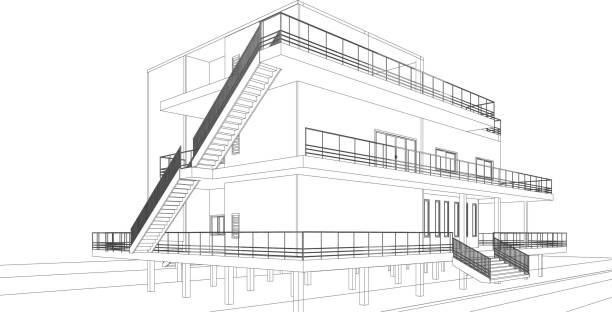A historic housing bill sits on Gov. Newsom’s desk. It is bold and messy. It aims to let cities build higher near transit. But the devil is in the details — and in the carve-outs. Los Angeles Times
Table of Contents
ToggleThis bill, Senate Bill 79, would override local zoning. It lets developers build up to nine stories next to subway stops. Within a half-mile of many transit stations, buildings of five to nine stories become possible. The law targets transit corridors to push density where transit exists. That is the core idea.
I like the aim. California desperately needs more homes. Getting housing near transit is smart planning. But the bill’s complexity and exemptions make it hard to trust. The rush to pass it exposed politics more than policy. That matters.
What SB 79 Actually Does
-
Overrides local rules near rail and some bus lanes.
-
Allows taller residential buildings: up to 9 stories at the closest distance to subway stations; lower heights further out.
-
Includes exemptions, deferrals, and carve-outs — shaped by late negotiations.
That’s the skeleton. Flesh is in the exceptions.
Why Upzoning Near Transit Is a Good Idea
First, it’s efficient. Building homes near train and rapid-bus stops reduces car dependence. People can walk to transit. That lowers commute times and emissions.
Second, it locates people where infrastructure already exists. Water lines. Transit corridors. Shops. Schools. That saves public dollars over time.
Third, it spreads growth more evenly. Instead of pushing more sprawl into distant suburbs, the state encourages compact growth in places that can handle density.
All those points are sound. In theory, SB 79 could unlock significant housing supply. Practically, it faces predictable resistance.
The Political Mess: Carve-Outs and Confusion
Lawmakers altered the bill to win votes. That created carve-outs. Some cities got more protection. Others did not. The so-called “Beverly Hills carve-out” is a lightning rod. People saw the politics and inequality.
The bill’s exemptions are not trivial. They make the map of impact hard to read. If residents cannot tell whether their block is affected, trust erodes. Confusion invites chaos — appeals, lawsuits, slowdowns.
When policy becomes a patchwork, enforcement and planning suffer. Officials and residents scramble to parse which properties qualify and which don’t. Implementation becomes expensive and slow.
Homeowner Fear and the Supply Argument
Many homeowners feel blindsided. The story of a Westchester couple in the LA Times illustrates that. They bought a quiet, single-story home. Now they fear five- or six-story buildings may rise nearby. That fear is real. It shapes local politics.
Yet fear doesn’t erase facts. California must add many homes to stabilize prices. Upzoning near transit is one lever among many. The core tension is real: how to increase supply without displacing people or erasing neighborhood character.
Implementation Risks
Passing a law is the easy part. Making it work is hard.
-
Mapping and clarity. Cities must translate the law into maps. That is painstaking work.
-
Local infrastructure. Transit stations can handle more riders, but other systems may lag — sewers, schools, parks.
-
Design and context. Taller buildings can be designed well or poorly. Context matters.
-
Displacement. Without protections, upzoning can speed gentrification. Longtime renters and small businesses are vulnerable.
-
Legal battles. Expect litigation. The bill’s carve-outs invite legal challenge.
Each risk is manageable with policy tools. But it takes focus and funding. Too often, policy makers pass laws without matching money or rules for implementation.
How Cities Should Prepare (Practical Steps)
Cities facing SB 79 should act fast and smart:
-
Make clear, public maps. Residents need to know if they are in the zone. Clarity builds trust.
-
Strengthen renter protections. Require relocation assistance and long-term affordability where possible.
-
Invest in infrastructure. Use state funds to upgrade sewer, power, schools, and parks.
-
Design standards. Require setbacks, step-downs, and quality materials to fit new buildings into neighborhoods.
-
Local hiring and small-biz support. Protect local retailers and create jobs for residents.
-
Phased implementation. Allow time for capacity building, not a sprint that breaks services.
These steps protect residents while still encouraging housing growth.
The Equity Test
Any serious housing law must answer the equity question. Who benefits? Who loses?
Upzoning can serve low-income families if paired with real affordability requirements. But if it primarily produces luxury units, displacement will follow. That is a predictable outcome. The state must pair upzoning with funding for deep affordability. Otherwise, the bill becomes a developer windfall with a veneer of green policy.
My Take: Support, But Conditioned
I support the idea of upzoning near transit. It is a sensible land-use reform that aligns housing with mobility.
But I am skeptical of the bill as written. The political compromises watered down clarity. Carve-outs undercut fairness. And the state did not fully fund the supports cities need to implement the law well.
So yes to density. No to half-measures that generate more displacement and confusion.
If Newsom signs SB 79, demand accompanying funding. Demand clear maps, renter protections and real affordability. Without those, the promise of upzoning will be squandered.
Final Thoughts
California stands at a crossroads. It can choose messy growth that lifts many. Or it can let politics produce partial wins that favor a few. SB 79 is a step in the right direction, but it is also a test. Will the state match ambition with clarity, equity, and funding? That will decide if this law is a turning point — or just another headline.
Want to get more insights? Read JDJ Consulting blogs.
California Upzoning Bill SB 79 – What to Know
California’s latest housing reform, SB 79, opens the door for taller, transit-oriented projects across Los Angeles and beyond. While the law promises higher density and sustainability, its local impact depends on city readiness and zoning clarity.
Max height near transit hubs
Local zoning overrides begin
Affordability still debated
The bill prioritizes density near transit but leaves cities to manage implementation. Developers should prepare for new entitlement processes, mapping challenges, and affordability compliance under evolving rules.






